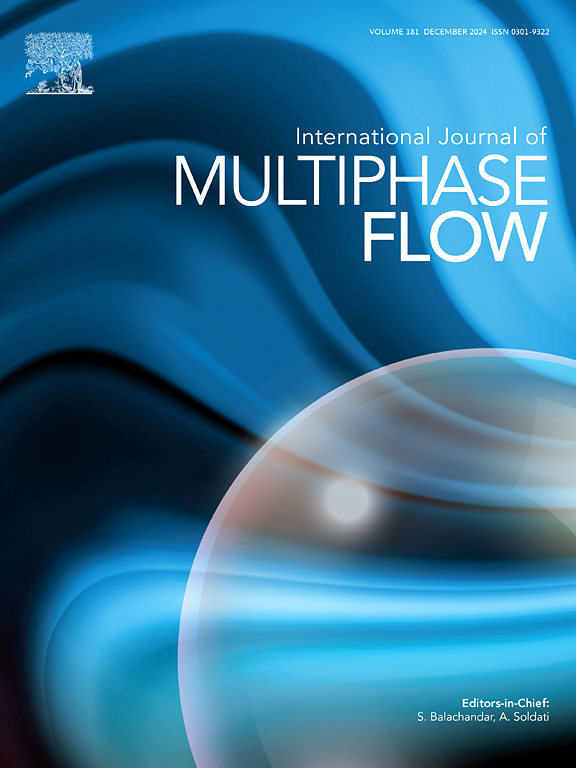New regimes and their spraying characteristics of electrohydrodynamic atomization
IF 3.6
2区 工程技术
Q1 MECHANICS
International Journal of Multiphase Flow
Pub Date : 2025-04-08
DOI:10.1016/j.ijmultiphaseflow.2025.105250
引用次数: 0
Abstract
Electrohydrodynamic (EHD) atomization is a highly useful regime of EHD spraying, which has been applied to the production of three-dimensional ultra-thin membrane structures and also the removal of high heat flux called electrospray cooling. However, the rapidly changing liquid atomization behavior under the impact of a high electrostatic potential is so complicated that many aspects of the atomization morphology are not completely comprehended. In this work, we conducted an experimental study on EHD atomization under three key operating parameters including applied voltage, flow rate, and nozzle height, where nozzle height is a variable that was barely investigated in previous EHD spraying work. Seven distinct spraying regimes, namely Spindle, Pulsating Jet, Rotating Atomization, Pulsating Atomization, Stable Atomization, Tilted Atomization, and Oscillating Jet are observed, where Rotating Atomization and Pulsating Atomization are two newly discovered regimes that have not been discussed before. We use the electric Bond number and dimensionless flow rate to analyze and explain the variations of spraying profile and regime, Taylor cone profile, liquid jet breakup length, liquid jet rotating and pulsating frequency, liquid jet atomization angle and atomization area of the atomization process. Especially, the characteristics of the two newly discovered atomization regimes are comprehensively examined and compared with those of the Stable Atomization regime, which provide some new insights into the complex and variable EHD atomization phenomena.

电流体动力雾化新体制及其雾化特性
电流体动力雾化是一种非常有用的电流体动力喷雾方式,它已被应用于三维超薄膜结构的生产和高热流密度的去除,称为电喷雾冷却。然而,在高静电势作用下快速变化的液体雾化行为非常复杂,雾化形态的许多方面尚未完全理解。在这项工作中,我们对EHD雾化在三个关键操作参数下进行了实验研究,包括施加电压、流量和喷嘴高度,其中喷嘴高度是一个变量,在以前的EHD喷涂工作中几乎没有研究过。观察到7种不同的喷射方式,即主轴、脉动射流、旋转雾化、脉动雾化、稳定雾化、倾斜雾化和振荡射流,其中旋转雾化和脉动雾化是两种新发现的方式,以前没有讨论过。利用电键数和无因次流量分析和解释了雾化过程中喷型和喷型、泰勒锥型、射流破碎长度、射流旋转和脉动频率、射流雾化角和雾化面积的变化。特别是对两种新发现的雾化状态的特性进行了全面的研究,并与稳定的雾化状态进行了比较,为复杂多变的EHD雾化现象提供了一些新的认识。
本文章由计算机程序翻译,如有差异,请以英文原文为准。
求助全文
约1分钟内获得全文
求助全文
来源期刊
CiteScore
7.30
自引率
10.50%
发文量
244
审稿时长
4 months
期刊介绍:
The International Journal of Multiphase Flow publishes analytical, numerical and experimental articles of lasting interest. The scope of the journal includes all aspects of mass, momentum and energy exchange phenomena among different phases such as occur in disperse flows, gas–liquid and liquid–liquid flows, flows in porous media, boiling, granular flows and others.
The journal publishes full papers, brief communications and conference announcements.

 求助内容:
求助内容: 应助结果提醒方式:
应助结果提醒方式:


